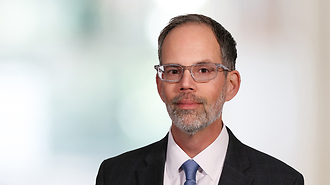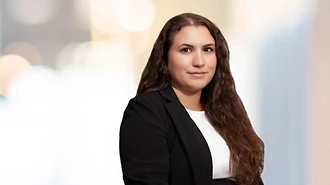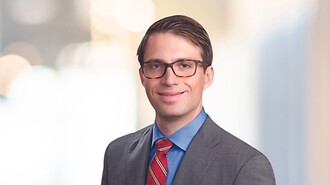
ENSUING LOSS CLAUSE
Bob Robison Com. Flooring Inc. v. RLI Ins. Co., 2025 U.S. App. LEXIS 6369 (8th Cir., Mar. 19, 2025)
Eighth Circuit, predicting Arkansas law, concludes that an ensuing loss exception to a “Defects, Errors, Or Omissions” exclusion* in a builder’s risk policy installation floater did not “restore” coverage for costs incurred by a contractor-insured to remove and replace flooring it installed in a gym that was damaged by a subcontractor’s faulty painting work. It was undisputed that faulty workmanship was the sole and exclusive cause of loss which occurred when paint was misapplied to the floor. The insured argued the ensuing loss clause restored coverage because the damage to the floor was a covered peril that resulted from the sub’s work and the language defining “covered peril” rendered the clause “nonsensical and its coverage illusory.”
The Eighth Circuit disagreed. It explained that the clause restores coverage if an excluded peril results in a loss caused by a separate covered peril:
This does not render the ensuing loss clause coverage illusory -- it still applies to a second loss caused by a covered peril that the excluded peril may have set in motion, like the San Francisco fires that resulted from the 1906 earthquake. By contrast, [the insured’s] interpretation of the ensuing loss clause would require the insurer to cover losses caused directly and exclusively by the excluded peril, nullifying the faulty workmanship exclusion.
Here, the costs of replacing and repainting the gym floor were not separate perils but, rather, different types of damage to covered property (both occurred at the same time and were solely caused by an excluded peril). In other words, “the faulty painting did not result in a covered peril; the painting ‘was itself the peril.’” Applying the ensuing loss clause to restore coverage for some of the loss (which was solely attributable to faulty construction) “nullifies the portion of the policy language” that excludes loss or damage caused by or resulting from construction or workmanship, the court said.
* The exclusion states:
PERILS EXCLUDED
2. “We” do not pay for loss or damage that is caused by or results from one or more of the following:
* * * * *
D) “Defects, Errors, Or Omissions In Property” - “We” do not pay for loss or damage caused by or resulting from inherent defects, errors, or omissions in covered property (whether negligent or not) relating to:
1) design or specifications;
2) workmanship or construction; or
3) repair, renovation, or remodeling.
But if a defect, error or omission as described above results in a covered peril, “we” do cover the loss or damage caused by that covered peril.
The Policy’s Perils Covered provision states: “‘We’ cover risks of direct physical loss or damage unless the loss is limited or caused by a peril that is excluded.”
Audio of the argument is available here.
NUMBER OF LOSSES (BUSINESS INTERRUPTION)
Heartland Co-op v. Nationwide Agribusiness Ins. Co., 2025 Iowa Sup. LEXIS 35 (Iowa, Mar. 21, 2025)
Iowa Supreme Court concludes that a commercial package policy providing loss of earnings and extra expense coverage* “for any one loss” (not expressly defined) unambiguously established a single blanket $3 million limit for all covered locations the insured claimed were impacted by the 2020 derecho (storm). The court explained that the coverage is concerned only with the insured’s net profit or loss before income taxes, contains no reference to individual covered locations, and clearly applies at the entity level. It referred to its own precedent that business interruption insurance generally covers income loss to the business entity as a whole. This was reinforced by (1) the policy limitation that the insurer “pay[s] no more than the Income Coverage ‘limit’ indicated on the ‘schedule of coverages’ for any one loss;”** and (2) the premium paid, which, according to the opinion, “bears upon the reasonableness of [the insured’s] expectations” and was “wholly uncorrelated” with the risk the insurer would have assumed if the insured’s “per location” interpretation were correct. Specifically, in this case, that meant the insured would have obtained at least $258 million in coverage in exchange for a $2,760 premium, which the court rejected, saying: “That is a commercially unreasonable interpretation of the policy wholly unsupported by the language of the policy agreement, and we will not adopt it.”
* The earnings and extra expense provisions state:
EARNINGS
“We” cover “your” actual loss of net income (net profit or loss before income taxes) that would have been earned or incurred and continuing operating expenses normally incurred by “your” “business”, including but not limited to payroll expense.
The net sales value of goods that would have been produced is included in net income for manufacturing risks.
EXTRA EXPENSE
“We” cover only the extra expenses that are necessary during the “restoration period” that “you” would not have incurred if there had been no direct physical loss or damage to property caused by or resulting from a covered peril.
“We” cover any extra expense to avoid or reduce the interruption of “business” and continue operating at a “covered location”, replacement location, or a temporary location. This includes expenses to relocate and costs to outfit and operate a replacement or temporary location.
“We” will also cover any extra expense to reduce the interruption of “business” if it is not possible for “you” to continue operating during the “restoration period”.
** The schedule provides the following limit options:
LIMIT (check one)
[ ] Income Coverage Limit - The most “we” pay for loss at any one “covered location” is:
[X] Refer to Scheduled Locations (check if applicable)
The selected option (the contracted-for limit) referred to a catchall that provided limits for “all ‘covered locations’” including a $3 million limit for earnings and extra expense coverage.
Case briefing and video of the argument are available.
PROPERTY DAMAGE - DIRECT PHYSICAL LOSS
Gharibian v. Wawanesa Gen. Ins. Co., 329 Cal. Rptr. 3d 574 (Cal. Ct. App., 2d Dist., 2025)
California appeals court holds that the presence of debris from a nearby wildfire at an insured residence, which sustained no burn damage, did not qualify as “direct physical loss to property” under a homeowners policy. The court relied primarily on case law stemming from the COVID-19 pandemic and held that the wildfire debris did not “alter the property itself in a lasting and persistent manner”; rather, the evidence indicated the debris was “easily cleaned or removed.” Citing to other California authority, it further rejected as irrelevant the fact that the insurer made payments to the insureds even though there was no coverage: “Because insurance companies often adjust claims for reasons entirely unrelated to their merits, [the insurance company’s] decision to pay money to the [insureds] may not be construed either as an admission of liability or as the substantive equivalent of accepting its obligations under the policy”.
Requests to depublish the opinion are pending before the California Supreme Court.
Recent Posts
Tags
- Pollution Exclusion
- CGL
- Duty to Defend
- New Jersey
- California
- First Circuit
- Texas
- Arkansas
- Business Interruption
- California Appeals Court
- Ensuing Loss
- Iowa Supreme Court
- Property Damage
- Excess Liability
- Alaska Supreme Court
- Climate change
- Fourth Circuit
- Hawaii Supreme Court
- New York
- Ohio Supreme Court
- United States Supreme Court
- PFAS
- Construction Defects
- Insurance Coverage
- Privilege
- Four Corners Rule
- Ohio
- Massachusetts
- Delaware
- Settlement
- Connecticut
- Opiods
- Firth Circuit
- Hostile Warlike Action
- Illinois
- Mississippi
- Pennsylvania
- Pollution
- Reinsurance
- Third Circuit
- Contribution
- Georgia
- Kentucky
- Limitation of Liability
- Rhode Island
- New Hampshire
- Asbestos
- Environmental
- homeowners policy
- imminent covered loss
- Individuals with Disabilities Education Act
- Liability coverage
- Massachusetts' Consumer Protection Act
- Post-loss
- Sixth Circuit
- Stub periods
- Wisconsin
- Colorado
- Court of Special Appeals
- Eighth Circ
- Eighth Circuit
- Maryland
- Nevada
- Recission Settlement Agreement
- South Dakota
- Utah
- American Law Institute
- Law of Liability Insurance
- Equitable Subrogation
- Florida
- The Restatement (Third) of the Law Governing Lawyers
- Third Party Beneficiary
- Tripartite Relationship Theory
- Appellate
- COVID-19
- Declatory Judgment
- U.S. Congress
- Bad Faith
- Consumer Protection Act
- Made Whole
- Malpractice
- Public Policy
- Reimbursement
Authors
- John S. Anooshian
- Alison Bennett
- Adam M. Berardi
- Paul A. Briganti
- Barbara S. Carra
- Robert Drummond
- David E. Edwards
- Elizabeth L. Ferguson
- R. Victoria Fuller
- Alexandra M. George
- Lynndon K. Groff
- Eric B. Hermanson
- Jeremy J. Koepf
- Morgan Liptak
- Gregory T. LoCasale
- Ingrid Lopez Martinez
- Gianna Martorano
- Austin D. Moody
- Haley S. Newman
- Frank J. Perch, III
- Victoria M. Ranieri
- Laura Rossi
- Brendaliz Minaya Ruiz
- Patricia B. Santelle
- Zachary M. Sherman
- Robert F. Walsh





